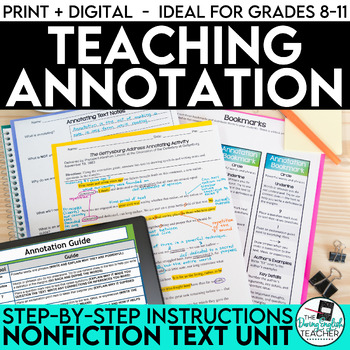

Synthesize evidence from multiple documents to answer an essential question.Use evidence from the article in a class discussion.Respond to a prompt, using evidence from the text.Step Five: Have students revisit the purpose for reading and respond to the text using their annotations. Start with one strategy at a time and as they get confident, add additional ones as needed.

Don’t give them all of these at once – I have learned this the hard way. I teach my students different strategies depending on my purpose and the text they are reading. My one bit of advice is to pick and choose which annotation strategies will work best for your students.
Annotating non fiction how to#
Step Three: Teach students how to chunk the text into smaller parts to help them break up the information. Pay attention to the layout of the text (subtopics, sections, chunks of text, etc).Look at the type of text (news article, textbook, research abstract, etc).Look at headnotes, abstracts, graphics, etc.Strategies that I have found easy for students to use:

Step Two: Teach students how to preview the text and use to predict what they think the text will be about. Students need to know WHY they’re doing the reading in the first place and what they’re going to do with the reading AFTER they’re done. Step One: Give students a purpose for reading the text. As an instructional coach, I work with our English teachers and other content area teachers to give students simple strategies to help them break down difficult texts and make them more manageable to read and understand. Students across all levels and in all content areas are expected to read and comprehend difficult informational texts.


 0 kommentar(er)
0 kommentar(er)
